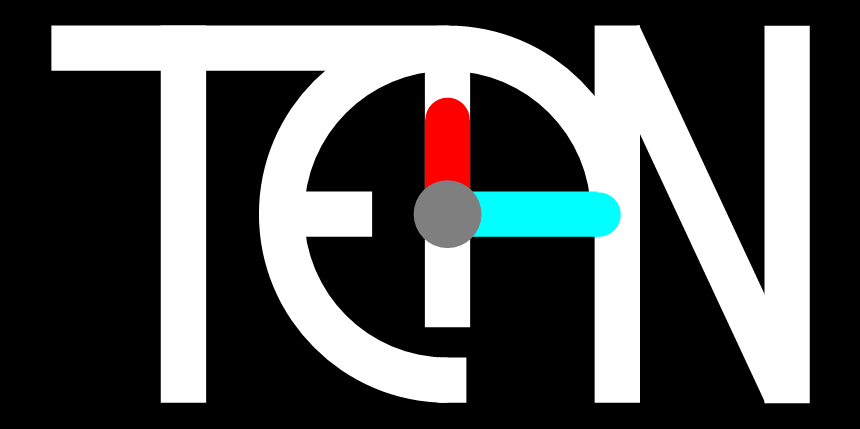at SCHOOL : WHO IS THE TEAN APP FOR?
For primary school teachers and students (in Switzerland: 5H to 8H): who are looking for an interactive tool for learning to read the clock and tell the time.
For language teachers and learners: the TEAN app offers the possibility of reading written expressions of analog time in more than 15 different languages.
TO TRAIN READING THE CLOCK
Tean features a 24-hour dial for children learning time, as well as a “training” mode and a “quiz” mode.
TEAN offers quizzes with progressive levels: to practice reading the time using the hands / to visualize what notions are such as “a quarter to..”, “half past..”, etc.
AND IN GERMAN, AND IN FRENCH?…
At school, from 7H in French-speaking Switzerland: to review, if necessary, notions such as “a quarter to”, “half past”, “twenty to” in French and practice them in German and English.
TEAN offers quizzes to learn time expressions in many different languages, including German and English.
To download on an Android and iOS phone or tablet (iOS 16 or later), the TEAN app offers:
11 progressive dials to choose from to read the time on increasingly abstract dials; 16 languages available to practice; 3 types of Quiz and an “exercise” mode to practice freely, some languages even with voice-over audio.
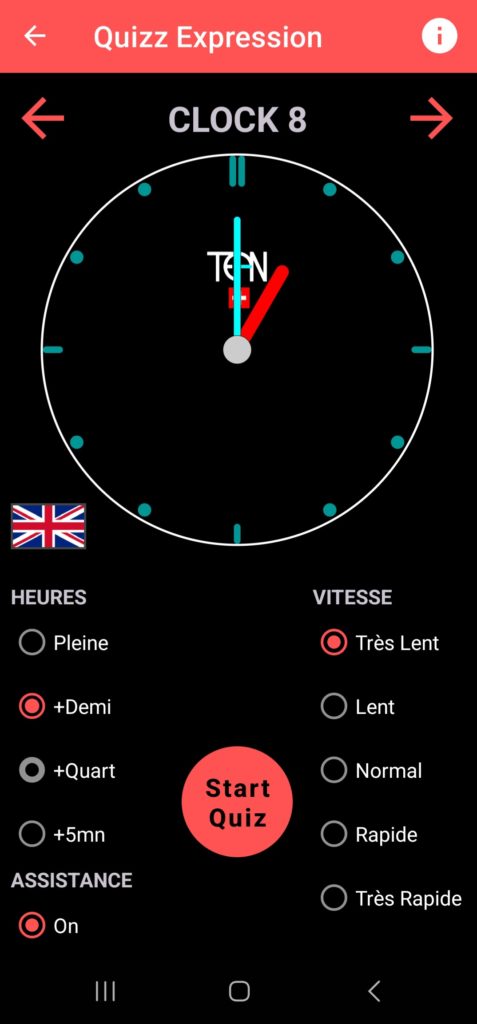
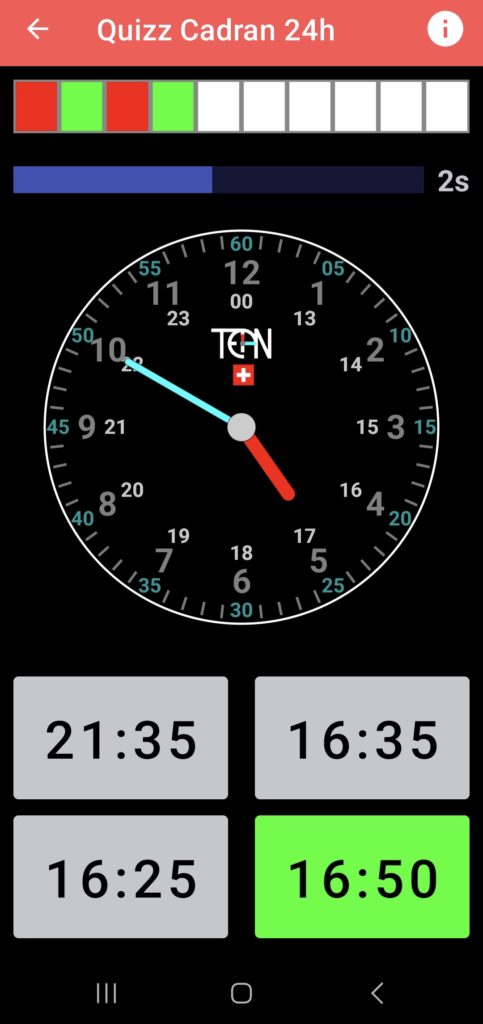
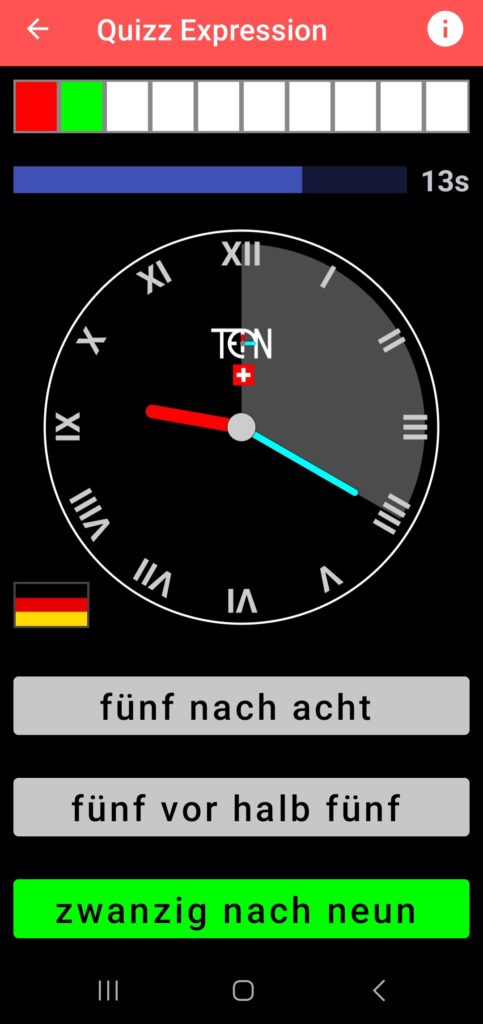
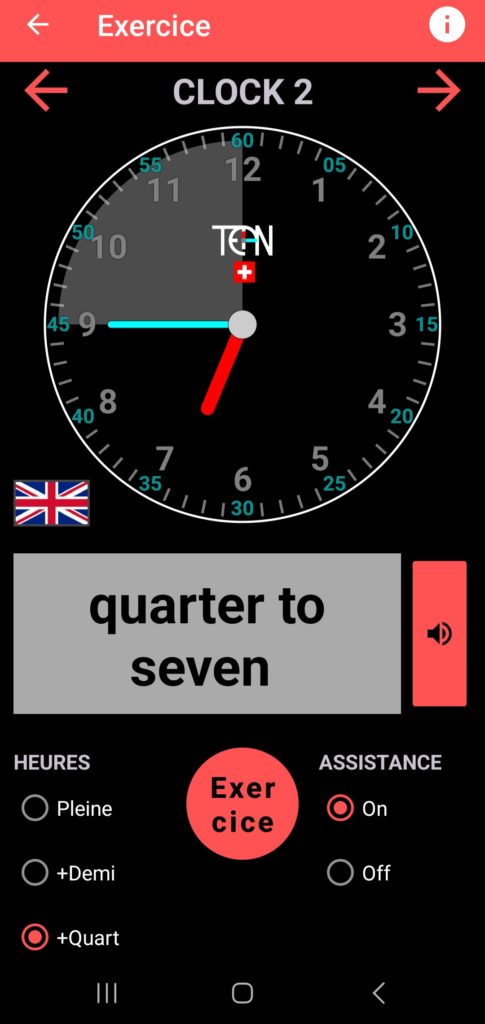
with audio voice-over.
